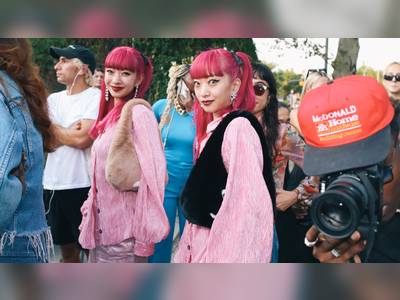Even pictures of the bald, pink newborn cubs may be outlawed. The southwestern city of Chengdu, where most of the country’s test-tube panda babies are born as part of a drive to save an animal notoriously reluctant to have sex, has begun drafting the world’s first panda law. Officials cannot say how people who use the panda’s image might be punished.
They were moved to act against the self-styled panda artist Zhao Bandi, whose trademark is a cap designed to resemble a panda cub and who is often photographed with scantily clad models in panda-ear head-dresses. His Bandi-Panda fashion show at China Fashion Week sparked nationwide concern that the panda’s image as a friendly symbol was being abused.
An official at the city’s Forestry Bureau said: “Zhao’s commercial stunt has prompted us to accelerate the drafting of legislation.” Another said: “The panda is not simply seen as an endangered animal here in Chengdu, but an asset representing the city’s image.” China’s biggest panda research centre and reserve lies outside Chengdu.
Only about 1,590 giant pandas are believed to survive in the wild, mostly in southwest China’s mountainous regions. By the end of 2006 about 239 pandas lived in captivity in China.
A rare survey of public opinion could scupper the city’s plans. It indicated that only 47 per cent of respondents favoured such a law while 45 per cent were opposed. Half agreed that artists should have free licence to portray the panda.
The fashion designer said it was most unexpected that his styles could be outlawed. “To me human beings are always more important than pandas. I have no intention of making fun of pandas. I am a fan of pandas. People deem giant pandas to be China’s state treasure. I am also a treasure for China, no less significant than the panda.”
Severe penalties already exist for harming the panda – including the death sentence for killing any of these rare animals.













